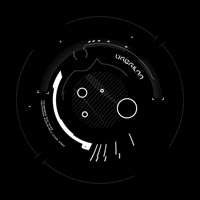This is an artist's impression of the exoplanet Kepler-1625b, transiting the star, with the candidate exomoon in tow ( Dan Durda )
Astronomers might have spotted the first ever "exomoon" orbiting around a distant world.
Exoplanets – worlds outside of our solar system – are some of the most exciting discoveries in astronomy. Scientists have now found thousands of them, with some offering hope they could support life.
But the new discovery would mark the first time that scientists have ever found a moon orbiting around one of those planets. And as well as being a thrilling discovery in itself, it could change our understanding of how solar systems form.
"This would be the first case of detecting a moon outside our solar system," said David Kipping, an assistant professor of astronomy at Columbia and one of the two astronomers who found the moon. "If confirmed by follow-up Hubble observations, the finding could provide vital clues about the development of planetary systems and may cause experts to revisit theories of how moons form around planets."
The new moon is far bigger than any of the nearly 200 natural satellites that have been found in our own solar system. It is comparable in size to its planets, roughly the same size as Neptune – orbiting a planet as big as Jupiter.
The two are floating around their own star 8,000 lightyears away.
Read more
It was found in the same way that scientists discovered those thousands of exoplanets: watching for the small dips that happens when they move in front of their star, and working out from those how big it is and what its orbit might be like.
They looked at data from 284 planets found in that way by the Kepler Space Telescope and tried to find those that had anything strange about their orbits.
One of those planets, known as Kepler 1625b, seemed to be behaving strangely. "We saw little deviations and wobbles in the light curve that caught our attention," Kipping said.
They watched the planet for some time, and noticed that soon after it passed in front of its star, there was another dip of light, which appeared to be "a moon trailing the planet like a dog following its owner on a leash".
It also seemed to be passing in front of its star slightly sooner that might be expected, which would be consistent with the kind of wobble that would happen because of a moon's gravity. "An extraterrestrial civilization watching the Earth and Moon transit the Sun would note similar anomalies in the timing of Earth's transit," Kipping said.
It is possible that the strange behaviour could also be caused by another planet in the system, and hope for further data from space telescopes to confirm their findings. But at the moment a companion moon is the most convincing explanation for the dip in the light and the change in the orbit, they said.
Exomoons are so difficult to find because they are so small, and as a consequence the dip they cause in the light coming from the star is much weaker than a larger planet. Their orbits also shift as they move around their star, because they orbiting their planet.
The new moon was probably found first because its larger size made it easier to see.
Both of the planets are within the habitable zone, where they are close enough to their star to get heat and support life but not so close that it would be killed by the intensity. But both planets are gaseous and so are unlikely to support life.
The gaseous nature of the planet also lead to questions about where its Moon might have come from. Our Moon, for instance, is thought to have been formed when an earlier collision shot off material that would go on to become the rock we see today, but that could not happen if the two objects are made up of gas.





![ZeNe[L]2}{.](https://csblackdevil.com/forums/uploads/monthly_2018_12/fKtKgG9.thumb.png.3280e0b9205a80a426e1be6d7c44b7ad.thumb.png.1541755332eaf6a9e3d77107746f5fbc.png)










